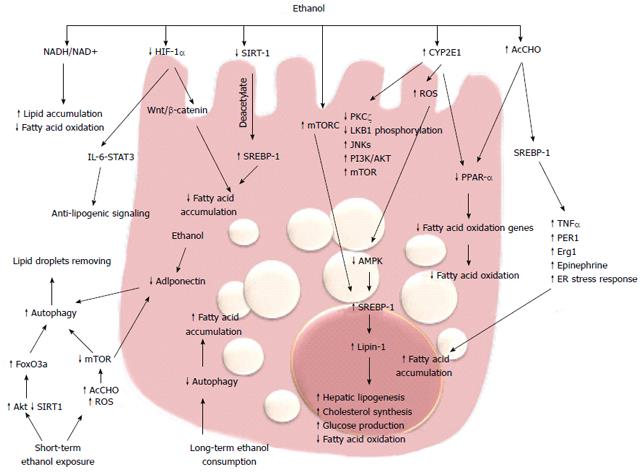Copyright
©2014 Baishideng Publishing Group Inc.
World J Gastroenterol. Dec 21, 2014; 20(47): 17756-17772
Published online Dec 21, 2014. doi: 10.3748/wjg.v20.i47.17756
Published online Dec 21, 2014. doi: 10.3748/wjg.v20.i47.17756
Figure 2 Molecular mechanisms of alcoholic fatty liver.
Alcohol consumption via multiple pathways increases the expression of SREB-1 and downregulates PPAR-α, promoting fatty acid synthesis and impairing β-oxidation, thus resulting in fatty acid accumulation. Long-term ethanol consumption promotes fatty acid accumulation through decreased autophagy, while short-term ethanol exposure promotes autophagy and degradation of lipid droplets. HIF: Hypoxia inducible factor; ROS: Reactive oxygen species.
- Citation: Ceni E, Mello T, Galli A. Pathogenesis of alcoholic liver disease: Role of oxidative metabolism. World J Gastroenterol 2014; 20(47): 17756-17772
- URL: https://www.wjgnet.com/1007-9327/full/v20/i47/17756.htm
- DOI: https://dx.doi.org/10.3748/wjg.v20.i47.17756









